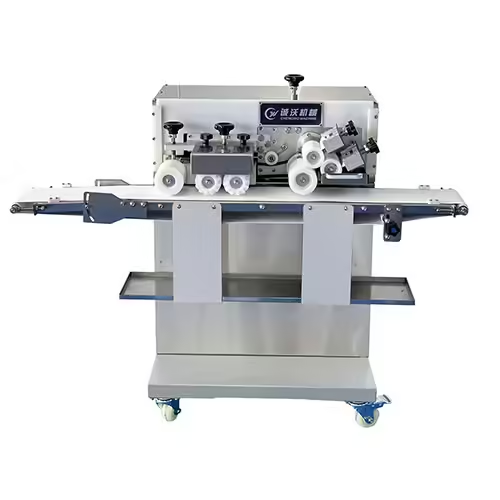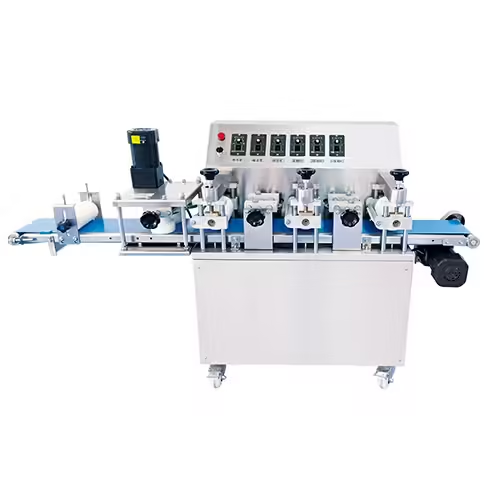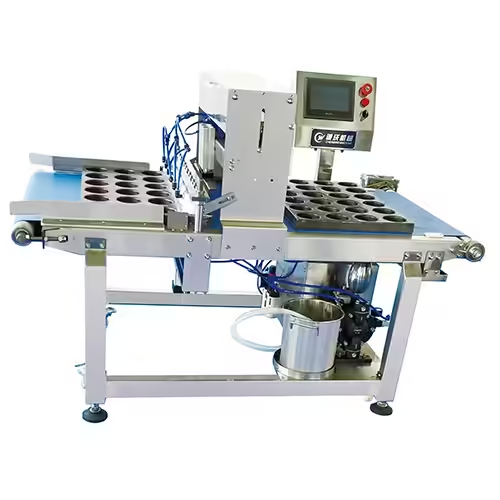


A complete guide to choosing a food machine, covering key features, expert tips, and insights to help you make the best purchase decision.

In today’s fast-evolving food industry, the efficiency and consistency offered by automation are game-changers. Whether you’re running a small bakery or a large-scale food processing facility, choosing a food machine that meets your specific needs is crucial. This comprehensive guide explores everything you need to know before purchasing a food machine—from understanding your operational goals to evaluating the technical features that matter. With expert-backed tips and industry insights, this guide aims to help you make the most informed decision possible.
A food machine isn’t just a convenience; it’s an investment in your production capacity, product consistency, and profitability. As consumer demands rise for high-quality, hygienic, and fast-delivered food, manual methods often fall short. Automating part or all of your production with a food machine provides several key advantages:
Investing in the right equipment can significantly streamline your operations while boosting your product’s market competitiveness.
There is a vast range of food machines designed for various stages of food production. Understanding these categories will help you align your investment with your business goals.
These are essential for dough, batter, or ingredient mixing in bakery, confectionery, and prepared food manufacturing. A food machine in this category can significantly improve consistency, reduce manual labor, and save mixing time. With programmable settings, precise ingredient incorporation becomes effortless, ensuring product uniformity across batches. These machines are ideal for operations requiring repeatable and scalable mixing results.
Ideal for vegetables, meat, or bakery products, these machines ensure precision and speed in portioning. A food machine with adjustable blades and automated feed can handle various textures and shapes with minimal waste. High-throughput models reduce prep time while enhancing safety by eliminating manual handling. Consistent portion sizes also improve packaging efficiency and visual appeal.
Used extensively in ready-meal and snack production, these machines automate complex cooking procedures with uniformity. A food machine for thermal processing ensures accurate temperature control, consistent texture, and flavor retention. Whether it’s frying, steaming, or baking, these machines can replicate artisanal quality at scale. They are also designed with hygiene and energy efficiency in mind.
Packaging is as important as production. A food machine in this category ensures hygienic, fast, and attractive packaging. Automated systems can handle vacuum sealing, tray sealing, or pouch filling with minimal human contact. These machines help maintain shelf life and product integrity while increasing output speed. Integrated date coding and labeling enhance traceability and compliance.
For liquid and semi-liquid products like sauces, yogurts, or dough, these machines maintain accuracy in volume and prevent wastage. A food machine with high dosing precision reduces product loss and ensures consumer satisfaction. Advanced models support multiple container sizes and recipe changes with ease. Their sanitary design supports quick cleaning and changeovers, ideal for diverse production lines.
These machines ensure that food items are sealed to prevent spoilage and leakage, especially in transport. A food machine with consistent sealing pressure and temperature helps preserve product freshness and comply with food safety standards. Whether shrink wrapping or vacuum sealing, these machines are crucial for shelf stability. They also contribute to tamper-evidence and consumer trust.
Designed to maintain hygiene in every stage of production, these machines clean utensils, conveyor belts, and even other machines. A food machine for sanitation helps reduce contamination risk and meet strict industry regulations. Automated cleaning systems improve consistency and reduce downtime. Many models are CIP (Clean-in-Place) capable, supporting seamless integration into continuous production environments.
Purchasing a food machine without a clear strategy can result in overspending or ending up with the wrong machine. Ask yourself the following questions:
Create a checklist based on the above to guide your decision-making process.
Understanding technical specifications can be overwhelming, but knowing what to look for simplifies the process. Here are some core features that can significantly impact your operations:
From semi-automatic to fully automated, determine how much human input is required. A food machine with higher automation can reduce labor costs, minimize errors, and increase production speed. However, semi-automatic models offer more control and flexibility for smaller operations. Consider your staffing capabilities and operational complexity when evaluating this feature.
This is the speed at which a food machine can produce or process food. Match it with your production goals to avoid bottlenecks or underutilization. High throughput machines are essential for large-scale operations with tight deadlines. It’s important to balance speed with product quality and system reliability.
Food-grade stainless steel is the industry standard due to its durability and hygiene compliance. It resists corrosion, withstands frequent cleaning, and ensures long service life. A food machine made with certified materials helps maintain food safety and meets health authority regulations. Avoid machines with plastic or untreated surfaces in high-contact areas.
Evaluate how energy-efficient the machine is relative to its output. A food machine with optimized power usage reduces long-term operational costs and environmental impact. Some models feature energy-saving modes or intelligent controls that adjust consumption based on load. Factor in local electricity costs when calculating ROI.
Ensure the machine fits within your existing facility without causing workflow disruptions. A food machine that’s too large may require costly layout changes, while a compact design can enhance space efficiency. Consider the need for access around the machine for maintenance, cleaning, and operation. Also check door sizes, ceiling height, and installation logistics.
Machines that are easy to clean and service reduce downtime and improve operational reliability. Look for tool-free disassembly, accessible components, and self-cleaning features. A food machine with built-in diagnostics can alert operators to service needs before issues escalate. Prioritize models with good documentation and local technical support.
A reliable food machine should comply with local and international food safety standards. Look for machines with certifications such as:
Operating uncertified equipment can result in penalties or even business closure.
It’s tempting to opt for the cheapest model, but price should never be the sole criterion. Consider the long-term value of the machine:
| Factor | Low-Cost Model | Mid-Range Model | Premium Model |
|---|---|---|---|
| Initial Investment | Low | Moderate | High |
| Output Quality | Inconsistent | Reliable | Excellent |
| Maintenance Costs | Frequent and High | Moderate | Low |
| Lifespan | 2–5 Years | 5–8 Years | 10+ Years |
| Tech Support Availability | Limited | Standard | Extensive |
| ROI Timeline | Unpredictable | 1–2 Years | <1 Year |
A high-quality food machine may have a higher upfront cost but tends to provide better returns, increased efficiency, and fewer problems down the road.
A food machine is a long-term investment that requires regular upkeep. Here’s what to expect:
Preventative maintenance can extend machine life and optimize performance.
An artisan bakery in Chicago saw a 70% reduction in prep time and doubled their bread output using a semi-automated dough mixer. The machine paid for itself in under 9 months.
A frozen food company upgraded to an automated packaging food machine and was able to meet large retail orders for national distribution. The quality control improvements reduced customer complaints by 40%.
A vegan snack brand used a compact food machine capable of cutting, cooking, and sealing. They grew from a home-based operation to full distribution in under 18 months with only a 3-person team.
Choosing a food machine is a strategic decision that can determine the efficiency, quality, and growth trajectory of your food business. From identifying your production needs to understanding certifications and after-sales service, this guide has equipped you with the essential knowledge to make a smart, long-term investment.
If you’re looking for a trusted supplier with a proven track record, Chengwo Food Machinery stands out as a reliable manufacturer offering a wide range of high-quality, food-grade machines. Known for their advanced technology, durable engineering, and excellent after-sales support, Chengwo provides solutions tailored to both small-scale producers and large industrial operations.
Ready to upgrade your production line with a food machine that delivers real results? Contact us today to explore the latest models from Chengwo Food Machinery and get expert advice tailored to your business.
What is the best food machine for small-scale businesses?
For small operations, multi-functional food machines offer flexibility and save space and cost.
How do I know if a food machine is safe to use?
Chengwo self-developed core products, such as filling machines and fully automatic bread production lines, have passed the EU CE certification, with energy consumption reduced by 35% compared to traditional equipment, and production capacity increased by up to 150%.
Can I upgrade my machine later?
Yes, many modern food machines offer modular upgrades or attachments.
What should I do if a machine breaks down?
Chengwo Food Machinery has been deeply involved in the field of food machinery for more than ten years. We promise to provide lifelong technical support and spare parts supply.

